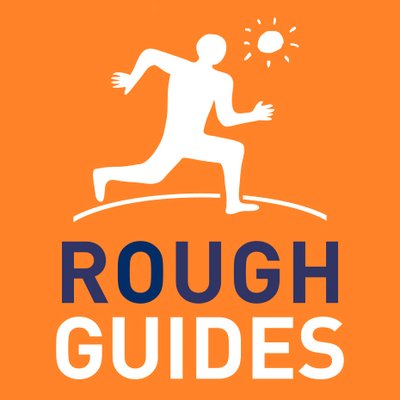Traveling to Thailand is like stepping into a world where every smile, bow, and interaction has deeper meaning.
As you pack your bags for this adventure of a lifetime, it's not just about what clothes to bring or which sights to see. It's about knowing the cultural etiquettes—the do's and don'ts—that will make your journey smooth and memorable.
So, let’s spin the globe and zoom in on Thailand with some travel tips that are as handy as they are important.

What to Do in Thailand
- Do use the Wai: Adopt the local gesture of respect. A ‘Wai’, done properly, can go a long way in showing your appreciation for Thai culture. Remember, it's about the thought you put into it, not just the action. Check out our guide to greetings in Asia to perfect your Wai
- Do dress appropriately: A must when visiting temples or sacred places. Cover your shoulders and knees, and you’re good to go!
- Do take off your shoes: Whether you're entering someone's home or a temple, taking off your footwear is a sign of respect. It’s all about leaving the dirt of the outside world, well, outside.
- Do try speaking a bit of Thai: Even saying ‘hello’ (sawasdee) or ‘thank you’ (khob khun) in Thai can bring out those warm, friendly smiles Thailand is known for.
- Do manage your temper: Keeping your cool is key in Thai culture. Raising your voice or showing strong negative emotions in public is a no-no and will reflect poorly on you. Embrace the ‘jai yen’ (cool heart) and keep the peace.
- Do eat like a local: Dive into the street food scene and the shared dishes with gusto. Remember, spoon in your right hand and fork in the left to push food onto the spoon. It will feel natural in no time.

What NOT to Do in Thailand
- Don’t disrespect the monarchy: The royal family is deeply revered. Always stand when the national or royal anthem is played, and avoid saying anything disrespectful. It's seriously offensive to show disrespect, you can even face criminal charges and 3 to 15 years in Jail!
- Don’t touch people’s heads: In Thai culture, the head is sacred. So, no patting or playful tousling of a child's hair, please.
- Don’t point with your feet: Feet are considered the dirtiest part of the body, so pointing them at people, especially at images of the Buddha, is considered disrespectful.
- Don’t take Buddha images lightly: Buddha statues and images are sacred, so no climbing on them for the ‘gram’, skip getting that buddha tattoo, don’t wear clothes with Buddha images, and always transport religious icons respectfully.
- Don’t litter: It's not just about fines; it’s about being eco-friendly. Thailand is blessed with natural beauty in its landscapes—let’s keep it that way.
- Don’t engage in public displays of affection: Keep it conservative. Holding hands is okay, but that’s about as far as it should go in public.
While this section provides you with a practical overview, the rest of our blog post will delve into the deeper reasons and underlying cultural significance behind these do's and don'ts, offering you a more comprehensive understanding of Thai customs and lifestyle.

Customs in Thailand
Thailand, often referred to as the "Land of Smiles," is steeped in rich traditions and cultural customs that have been passed down through generations. These customs, deeply rooted in the Thai way of life, reflect the nation's history, religious beliefs, and social practices.
Understanding and respecting these customs is crucial for anyone touring Thailand, as they form the foundation of social interactions and the cultural fabric of the country.

Wai: The Gesture of Respect
The "Wai" is a traditional Thai greeting that involves a slight bow, with the palms pressed together in a prayer-like fashion. The gesture signifies respect and is used in various social contexts, ranging from greeting friends and family to showing reverence to monks and images of the Buddha.
The height at which one places their hands and the depth of the bow can indicate the level of respect being shown, making the Wai an essential aspect of Thai etiquette.
Read more on how to respectfully greet in Asian countries.

Shoes Off Policy
Upon entering a Thai home or a place of worship, such as a temple, it is customary to remove one's shoes. This practice, rooted in cleanliness and respect, is a symbol of leaving the outside world behind. It’s also common in many traditional Thai businesses and shops. So, when you see a row of footwear at the entrance, make sure to add yours to the collection.

Sanuk: The Pursuit of Enjoyment
"Sanuk" is a concept deeply embedded in Thai culture, emphasizing the importance of enjoying life and making the most out of every situation. Whether at work or in social gatherings, Thais believe in adding a sense of fun and pleasure to their activities. This philosophy is not just about seeking joy in grand gestures but also finding happiness in life's simple moments, reflecting the nation's optimistic and joyful outlook.

Eating Customs
Dining Thai-style is a little bit different than what we're used to. Meals are typically served family-style, with multiple dishes shared by everyone at the table. It's customary to use a spoon and fork for eating, with the spoon being the primary utensil. Chopsticks are generally used only for noodle dishes. When dining in a Thai home, it is polite to wait for the host to invite you to begin the meal.
We bet you’ve heard of the famous Pad Thai, but have you heard of these five dishes you absolutely must try when traveling Thailand?

Spirit Houses
Scattered throughout Thailand are small, elaborate structures known as spirit houses, placed outside homes and businesses. These miniature houses, usually perched on a pedestal, are intended to provide a shelter for the spirits and ensure harmony and protection for the occupants. It's common to see Thais making offerings of food, flowers, and incense to appease these spirits and bring good fortune.

Temple Etiquette
Thailand's landscape is dotted with stunning temples, which are considered sacred spaces. Temple Etiquette and Customs.
Thailand's Buddhist temples, known as wats, are sacred spaces that deserve the utmost respect when visiting. Be sure to follow proper etiquette to avoid offending monks or other devotees.
Rules for Entering Temples
- Remove your shoes before entering temple buildings. Never step over the threshold while wearing shoes.
- Dress modestly by covering shoulders and knees. Some temples will lend sarongs to improperly dressed visitors.
- Avoid too much noise or commotion. Speak softly and turn off cell phones and music.
- Don't climb onto Buddha statues or pose inappropriately with them. Treat all images of Buddha with reverence.
Proper Behavior Around Monks and Buddha Statues
- Don't point your feet towards monks or Buddha images, as feet are considered the lowest part of the body.
- Sit lower than monks when sharing a space, and avoid making them feel uncomfortable.
- Women should not make physical contact with monks or hand objects directly to them. Place items in their hands instead.
- Do not pat Buddha statues on the head, which is considered highly disrespectful.
Dress Code Expectations
- Cover shoulders and knees fully when visiting temples. Remove hats and sunglasses.
- Some temples require both men and women to wear long pants. Find out ahead of your visit or avoid shorts if planning a temple visit.
- Shirts with offensive images or language are prohibited. Opt for modest, plain shirts.
Following these rules shows respect for Thailand's sacred spaces and the people who maintain them. With proper etiquette, you can fully appreciate the serenity and history of Thailand's remarkable temples.

The Royal Family
Historians believe that the tradition of Thai monarchy dates back to the early 13th century, although the current dynasty began in 1782. The king of Thailand is the head of state. He is also the head of the Royal Armed Forces, and Upholder of Religions. The current king is Maha Vajiralongkorn (Rama X). He has been in power since 2016 when his father, King Bhumibol Adulyadej passed away. Thai people love the king and have the utmost respect for the monarchy. Thai kings also have a large influence on the country’s politics, making the monarchy an integral part of society. King Rama IX, for example, played a key role in transitioning the country into a democratic system in 1992.
Respect for the monarch and the royal family is deeply ingrained in Thai society. Criticism of the royal family is not only frowned upon but also illegal, with strict lèse-majesté laws in place. When the national anthem or the royal anthem is played, for instance, at cinemas before the movie starts, everyone is expected to stand in respect.

Religion in Thailand
Thailand is home to a rich tapestry of religious beliefs that have shaped the culture and identity of this Southeast Asian nation. Buddhism stands as the dominant faith, practiced by over 90% of the population. However, the Thai religious landscape extends far beyond Buddhism alone. Animism, Hinduism, Islam, and Christianity all have a presence, blending with the Theravada Buddhist traditions and folk practices that exert the strongest influence on daily life.
Religion permeates nearly every facet of Thai society and culture. Buddhist temples, known as wats, dot cities and rural areas. Orange-robed monks carrying alms bowls are a common sight on morning walks. Shrines to spirits and deities can be found outside homes, businesses, and buildings. Traditional festivals celebrate events in the Buddhist calendar and pay homage to animist spirits. This intermingling of diverse beliefs provides a window into the very soul of Thailand.
While the majority of Thais identify as Buddhist, many incorporate spiritual practices from multiple faith traditions into their worldview. This religious harmony allows Thais of all backgrounds to coexist peacefully. Thailand takes pride in its cultural diversity, tolerance, and emphasis on living in balance with one another.

History of Religion in Thailand
Thailand's religious landscape has been shaped by a confluence of beliefs and traditions over the centuries. Buddhism was introduced from India and Sri Lanka during the 3rd century BCE, taking root and spreading among the population. The faith gained the patronage of rulers and emerged as the dominant religion by the 13th century.
Hindu influences also arrived alongside Buddhism, introduced by traders, immigrants, and connections to the Indian subcontinent. Hindu iconography, stories, and architecture became incorporated into Thai Buddhist temples and rituals.
Islam emerged in southern Thailand between the 13th-15th centuries through increased trade and the establishment of sultanates in the region. Muslim communities took hold in cities like Pattani, Yala, and Narathiwat, where they remain influential today.

Christianity arrived in the 16th century with Portuguese traders and Catholic missionaries. Growth was slow initially but Protestant missionaries in the 19th century helped spread Christianity, particularly among ethnic minorities in northern Thailand.
Over this long historical period, Buddhism continued to thrive with royal support. Despite the presence of other faiths, Thailand remains overwhelmingly Buddhist today with over 90% of the population adhering to Theravada Buddhism, which forms the spiritual core of Thai society.

Theravada Buddhism
Theravada Buddhism is the dominant religion in Thailand, practiced by over 90% of the population. It is an orthodox school of Buddhism that adheres strictly to the earliest Buddhist teachings and scriptures.
The focus in Theravada Buddhism is on attaining nirvana and ending the cycle of rebirth by following the Noble Eightfold Path. This involves the right understanding, right intention, right speech, right action, right livelihood, right effort, right mindfulness, and right concentration.
Some key beliefs include the Four Noble Truths, which state that life is suffering, suffering is caused by desire, ending desire ends suffering, and the way to end desire is by following the Eightfold Path. Theravada Buddhists also believe in karma, rebirth, and the importance of developing wisdom and compassion.

Temples (wats) are central to religious life in Thailand. Buddhist monks live in the temple grounds and lead spiritual ceremonies, provide blessings, and preserve Buddhist teachings. Boys traditionally ordain as monks for a short period to learn the Buddha's teachings.
The Sangha, or monastic community, serves as the custodian of the Buddhist faith. Monks follow strict rules of conduct, shave their heads, wear simple robes, and go barefoot. They rely on alms from laypeople for food and go out in the mornings to collect offerings.
There are several influential Buddhist traditions in Thailand including Thammayut and Mahanikai. While there are some minor differences, they all follow the Theravada school. Meditation and mindfulness are emphasized along with studying Buddhist texts. Chanting, ceremonies, and making merit through good deeds are important spiritual practices.

Folk Beliefs and Animism
Animism and folk beliefs have long been an integral part of Thai spirituality. Many Thais, especially in rural areas, adhere to animistic traditions that attribute souls and spirits to objects, animals, and natural phenomena. These beliefs predate the arrival of Buddhism and Hinduism in Thailand.
Animistic rituals often revolve around appeasing local spirits and seeking their protection from misfortune. For example, spirit houses can be found outside homes and businesses, where offerings are made to spirits that are believed to occupy the land. Thai folk beliefs also incorporate supernatural elements like ghosts, magic, astrology, fortune-telling, sacred tattoos, and amulets.
Rather than replacing these traditional beliefs, Buddhism was gradually integrated into existing worldviews when it arrived centuries ago. Many Thais today seamlessly combine Buddhist practices with older animistic rituals and customs. They may make offerings at Buddhist temples while also paying respects to spirits, consulting astrologers, or obtaining sacred tattoos. This unique intermingling demonstrates the resilience of ancient folk traditions even as organized religions became more dominant.

Islam in Thailand
Islam is a significant minority religion in Thailand, with adherents making up around 5% of the population. Most Thai Muslims live in the southern border provinces near Malaysia, where they constitute the majority in some areas. The southern provinces of Pattani, Yala, Narathiwat and parts of Songkhla have predominant Muslim populations of around 80%.
Islam first arrived in Thailand between the 13th and 15th centuries through trade and intermarriage. Persians, Indians and Malays gradually introduced the religion. Today, Thai Muslims are ethnically and linguistically distinct from the Buddhist majority. They speak Yawi, a dialect of Malay, as their first language.
Thai Muslims follow the Sunni Shaf'i school of Islamic jurisprudence. Their way of life and culture is strongly influenced by Malay traditions. Mosques serve as important community centers where Islamic law is administered for issues like marriage, divorce and inheritance. Major Muslim holidays like Eid al-Fitr and Eid al-Adha are celebrated with prayers and feasts. Islamic dress codes and dietary restrictions are commonly adhered to.

Hinduism and Other Religions
Thailand is home to several minority faiths beyond the dominant Theravada Buddhism. Hindu communities have existed in Thailand for centuries, originally brought by Indian traders and migrants. Significant Hindu influences can be seen in Thai culture, mythology, language and architecture. Major Hindu deities like Brahma, Vishnu, Shiva and Ganesha are widely revered across Thailand. Many Thai Buddhists incorporate Hindu rituals and beliefs into their spiritual practices.
Christianity arrived in Thailand with Portuguese traders and missionaries in the 16th century. Today, Christians make up around 1% of the population, with Protestantism and Catholicism being the largest denominations. Many Christians are concentrated in northern hill tribe communities. The Chinese Thai population brought Chinese folk religions from China, which incorporate ancestor worship, Confucian ethics and Taoist elements. Though a minority, diverse religions have coexisted in Thailand for generations, contributing to the country's rich spiritual landscape.

Culture and Identity
Religion plays an integral role in shaping Thailand's culture, values, and national identity. The teachings of Theravada Buddhism have had a profound influence on the country's art, literature, architecture, cuisine, traditions, and way of life.
Central Buddhist values like mindfulness, non-violence, detachment, and compassion are deeply ingrained within Thai society. Concepts of karma and rebirth also lead many Thais to be accepting of life's circumstances. The practice of giving alms and performing good deeds is seen as accruing spiritual merit.

Buddhism's focus on impermanence is reflected in Thai cultural attitudes, with priority placed on enjoying the present moment. Religion also promotes social harmony, with confrontation and expressing strong emotions often avoided. Thai culture emphasizes collectivism, interdependence, and mutual obligations within the family and community.
Religious rituals, ceremonies, and festivals form the rhythm of cultural and social life. Temple fairs, robe offerings, ordinations, funerals, and holy days punctuate the calendar. The monarchy ties the Thai people together, and the king is seen as a dharmic Buddhist ruler.
While the vast majority are Buddhist, most Thais blend their faith with animistic beliefs and Hindu-Brahman practices. This religious syncretism shapes folklore, traditional medicine, classical dance, astrology, and local wisdom. The interweaving of diverse spiritual elements creates the unique tapestry of Thai culture and identity.

Participating in Thai Festivals
Thailand hosts many lively festivals throughout the year that highlight Thai culture and provide memorable experiences.
Songkran - Thai New Year
Songkran takes place in mid-April and is Thailand's biggest festival. It's celebrated with massive nationwide water fights. Thais roam the streets splashing water on each other using buckets, water guns, and hoses.
If you're joining the fun, be prepared to get drenched (and we mean drenched).

Loi Krathong - Festival of Lights
Loi Krathong occurs in November on the night of the full moon. Thais celebrate by floating decorative baskets called krathong on rivers, lakes, and canals. Krathong are traditionally made from banana leaves and flowers, with incense and candles inside. Making wishes as they set their krathong afloat, this festival signifies letting go of grudges and anger.
Read more about Thailand's Festival of Lights.

Makha Bucha Day
Celebrated in February or March, this holiday marks the occasion of when 1,250 of Buddha’s disciples gathered to hear him speak. To honor this day, Buddhists visit temples from early morning until evening for a candlelight ceremony.
Visakha Bucha Day
Celebrated in May, Visakha Bucha Day commemorates the birth and enlightenment and passing of Gautama Buddha. This is typically celebrated with rituals at local temples for merit all day, from early morning until evening for a candlelight ceremony.

Asanha Bucha and Start of the Buddhist Lent
Celebrated in July, Asanha Bucha is a national holiday which commemorates the Buddha’s first public sermon. This takes place during the eighth month of the lunar calendar, usually July.
Following the first sermon of Buddhism, and during his lifetime, at the start of the rainy season, monks wandered around, thus disturbing the plants of the farmers. Buddha asked his followers to stop their physical religious journeys and instead focus on their inner religious journeys.
During this period, the tradition of Khao Phansa, or Buddhist Lent, began to bring candles to offer monks staying at the temples and monasteries during the 3-month wet season.
From this, the well-known candle festival of northeast Thailand was started. This developed into the decoration of these candles in elaborate traditional Thai patterns. Candle decorating has become a big competition among local artists, one that is famous both nationally and internationally.

Explore Thailand on Two Wheels
Diving into Thailand's customs is the perfect start for any adventure, setting the stage for unforgettable experiences that become even more profound as you journey through the serene bike paths winding through the heart of the country.
As you prepare to immerse yourself in this rich cultural tapestry, consider enhancing your exploration with our curated bike tours in Thailand, uniquely designed to connect you more deeply with the country’s landscapes and traditions.
 By Lirene Cilliers Posted 28th May 2024
By Lirene Cilliers Posted 28th May 2024







